Syn.: Caullinia hippuroides Raf., Hippuris eschscholtzii Cham. ex Lam., Hippuris montana Ledeb. ex Rchb.
Family: Plantaginaceae Juss.
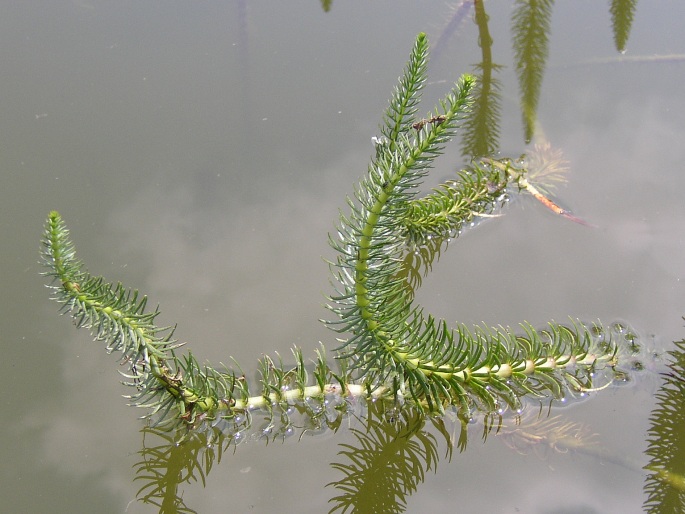
Distribution: It occurs in temperate regions worldwide – Europe (except the southernmost areas), northern and eastern Asia, North and South America (from Alaska and Greenland to northern California and Illinois, from central Chile to Tierra del Fuego).
Ecology: It grows in stagnant and slow-running waters, on banks of lakes, bogs, streams, on river shores, from lowlands to mountains, in the Alps it can be found in elevations up to about 2000 m, in China even up to 5000 m asl. It blooms from May to July.
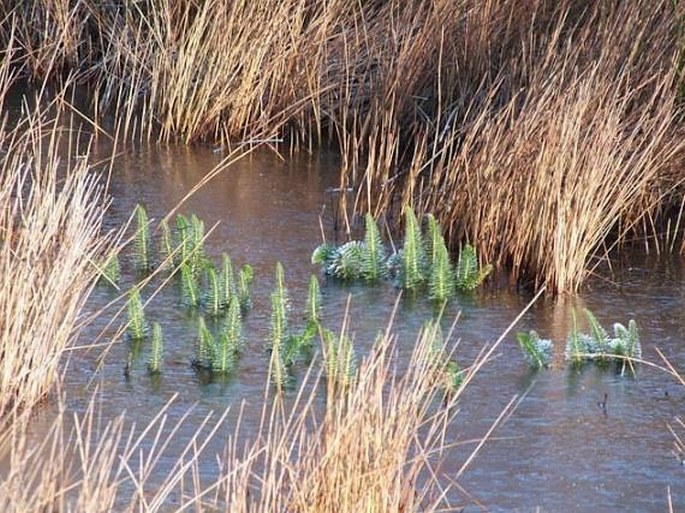
Description: Aquatic perennial herb with creeping rhizome from which arise erect leafy shoots (5–)30–60(–150) cm tall. Leaves in whorls of 8–15, simple, (0.5–)5–8(–10) cm long; the submerged parts usually have long, linear-lanceolate, flaccid, light green leaves, while the emergent parts have short, linear, rigid, dark green leaves. Flowers male, female, hermaphrodite or sterile, borne in leaf-axils, the upper sessile, the lower usually shortly pedicellate, perianth reduced to a rim around the top of the ovary. Fruit is a nut, 2–3 mm long, ovoid, smooth.
Use: The Common Mare’s-tail is grown as an ornamental plant in garden ponds.
Threat and protection: It is protected by law in Czechia, Slovakia and Serbia. Different degrees of endangerment are assigned to this species in states of Maine, New Hampshire, New York and Vermont.
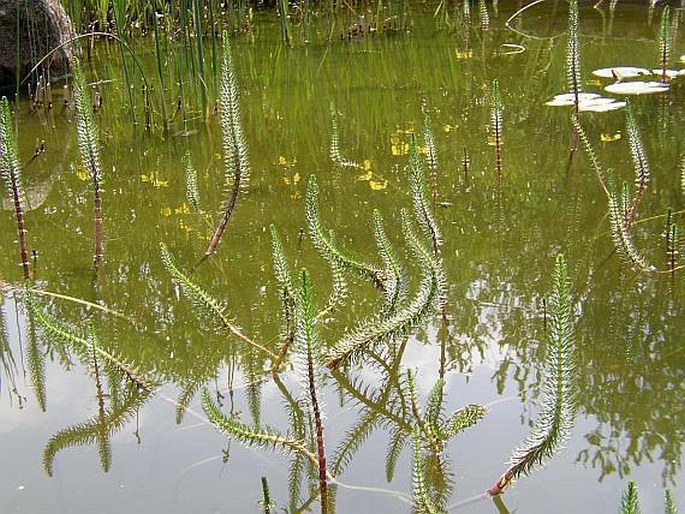
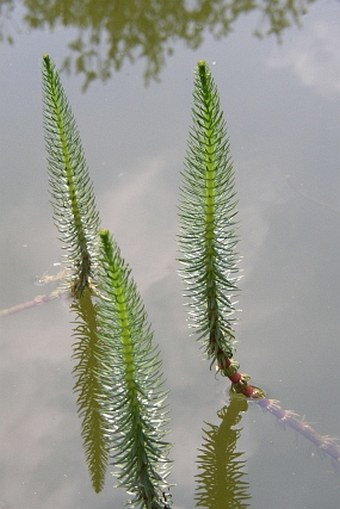
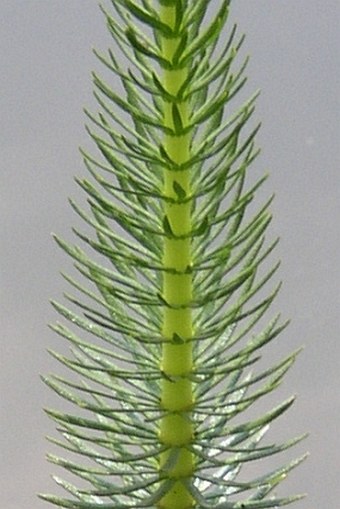
These images were taken in Czechia, Moravia, Podyjí (by Ladislav Hoskovec, 10. 6. 2005), and Canada, Alberta, Calgary, Confluence Park (by Karel Bergmann, 20. 10. 2013).


